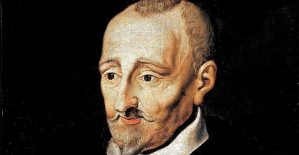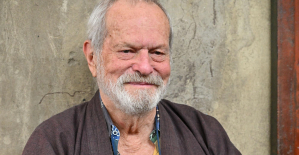"the Spring has gone farther north in the country than usual. And compared to 100 years ago, it's extremely early."
"Coltsfoot and hepatica blooming in the whole country except in the far north of the mountains, shows the reports that are streaming in during valborg."
"During the spring festival and the first of may has Vårkollen been implemented for the fifth year in a row. It is a collaboration between the Swedish botanical association and the Swedish university of agricultural sciences (SLU), where the volunteers reported the presence of coltsfoot, hepatica, leaf, willow, birch and bird cherry."
"Moa Pettersson at the Swedish botanical association notes that the interest to participate in the Vårkollen has increased. In the year 8 500 reports from the 1 600 sites come in."
"– Sign of spring is a very dear tradition in this country and it is the six plants that are fairly easy to recognize. That's why we have chosen them."
"Because a similar reporting of the sign of spring was made around the turn of the last century, scientists have been able to compare both with the way it looked over 100 years ago and with the period 2015-2018. And both comparisons have the spring of this year reached exceptionally far north."
"– It is one of the more extreme years. We can surely find some other ones this year, but they're quite unusual, " says Ola Langvall at the Swedish university of agricultural sciences, coordinator of the Swedish fenologinätverket."
"He highlights the häggens flowering as an example."
"– In the previous Vårkollarna we have received only isolated reports that they have begun to flower at the bottom in Skåne so early. Now we see that the bloom is pretty common in Götaland and most of Svealand, but not in Stockholm. Compared with historical data for 100 years ago, it is three weeks earlier."
"Ola Langvall don't want to draw the conclusion that it is climate change that makes that spring is early."
"– That just in the year so early on is a natural variation. If we get a number of years where it gets so early, then we can say that it is a trend. Dare we not do quite yet."
"He believes that the early vårtecknen can give a taste of how we can be affected by climate change. Heating and early spring flowers are welcomed by most, but can also exacerbate the problems for pollenallergiker."
"TT: Shall I rejoice or be troubled by the reports about earlier signs of spring?"
"– Both parts. I rejoice always when the spring flowers will come and the leaves turn out. But it is clear that you are worried about how it will go in the long term, with plants and animals, " says Ola Langvall."
"The early flowering also means increased risk of a setback. The rain and the cold that struck in parts of the country can threaten the flowering and pollination. The result can be bad with the fruit on the trees and berries in the woods, " he points out."
"For the fifth year in a row, the Swedish botanical association and the Swedish university of agricultural sciences (SLU) conducted Vårkollen. Volunteers have reported sightings of coltsfoot, hepatica, leaf, willow, birch and bird cherry."
"Almost 8 500 reports from the 1 600 sites have been analysed by researchers at SLU."
"A similar activity was conducted at the end of 1800 and beginning of 1900-century, which means that the researchers can compare how it looked over 100 years ago."
"Björkarnas lövsprickning has this year begun in the whole country, with the exception of parts of the mountains and the northern Norrland kustband. 100 years ago, it had usually just started in southern sweden on 1 may and the last few years it has reached up to the Mälardalen region."
"the bird-cherry is already in full bloom in large parts of Götaland and Svealand. 100 years ago started the flower in the southernmost part of Skåne at the end of may."
"Coltsfoot and blue anemone has already managed to bloom a bit up in the north, which is only reported up to the Mälardalen region in the past vårkollar."

 United States: divided on the question of presidential immunity, the Supreme Court offers respite to Trump
United States: divided on the question of presidential immunity, the Supreme Court offers respite to Trump Maurizio Molinari: “the Scurati affair, a European injury”
Maurizio Molinari: “the Scurati affair, a European injury” Hamas-Israel war: US begins construction of pier in Gaza
Hamas-Israel war: US begins construction of pier in Gaza Israel prepares to attack Rafah
Israel prepares to attack Rafah First three cases of “native” cholera confirmed in Mayotte
First three cases of “native” cholera confirmed in Mayotte Meningitis: compulsory vaccination for babies will be extended in 2025
Meningitis: compulsory vaccination for babies will be extended in 2025 Spain is the country in the European Union with the most overqualified workers for their jobs
Spain is the country in the European Union with the most overqualified workers for their jobs Parvovirus alert, the “fifth disease” of children which has already caused the death of five babies in 2024
Parvovirus alert, the “fifth disease” of children which has already caused the death of five babies in 2024 Falling wings of the Moulin Rouge: who will pay for the repairs?
Falling wings of the Moulin Rouge: who will pay for the repairs? “You don’t sell a company like that”: Roland Lescure “annoyed” by the prospect of a sale of Biogaran
“You don’t sell a company like that”: Roland Lescure “annoyed” by the prospect of a sale of Biogaran Insults, threats of suicide, violence... Attacks by France Travail agents will continue to soar in 2023
Insults, threats of suicide, violence... Attacks by France Travail agents will continue to soar in 2023 TotalEnergies boss plans primary listing in New York
TotalEnergies boss plans primary listing in New York La Pléiade arrives... in Pléiade
La Pléiade arrives... in Pléiade In Japan, an animation studio bets on its creators suffering from autism spectrum disorders
In Japan, an animation studio bets on its creators suffering from autism spectrum disorders Terry Gilliam, hero of the Annecy Festival, with Vice-Versa 2 and Garfield
Terry Gilliam, hero of the Annecy Festival, with Vice-Versa 2 and Garfield François Hollande, Stéphane Bern and Amélie Nothomb, heroes of one evening on the beach of the Cannes Film Festival
François Hollande, Stéphane Bern and Amélie Nothomb, heroes of one evening on the beach of the Cannes Film Festival Skoda Kodiaq 2024: a 'beast' plug-in hybrid SUV
Skoda Kodiaq 2024: a 'beast' plug-in hybrid SUV Tesla launches a new Model Y with 600 km of autonomy at a "more accessible price"
Tesla launches a new Model Y with 600 km of autonomy at a "more accessible price" The 10 best-selling cars in March 2024 in Spain: sales fall due to Easter
The 10 best-selling cars in March 2024 in Spain: sales fall due to Easter A private jet company buys more than 100 flying cars
A private jet company buys more than 100 flying cars This is how housing prices have changed in Spain in the last decade
This is how housing prices have changed in Spain in the last decade The home mortgage firm drops 10% in January and interest soars to 3.46%
The home mortgage firm drops 10% in January and interest soars to 3.46% The jewel of the Rocío de Nagüeles urbanization: a dream villa in Marbella
The jewel of the Rocío de Nagüeles urbanization: a dream villa in Marbella Rental prices grow by 7.3% in February: where does it go up and where does it go down?
Rental prices grow by 7.3% in February: where does it go up and where does it go down? Even on a mission for NATO, the Charles-de-Gaulle remains under French control, Lecornu responds to Mélenchon
Even on a mission for NATO, the Charles-de-Gaulle remains under French control, Lecornu responds to Mélenchon “Deadly Europe”, “economic decline”, immigration… What to remember from Emmanuel Macron’s speech at the Sorbonne
“Deadly Europe”, “economic decline”, immigration… What to remember from Emmanuel Macron’s speech at the Sorbonne Sale of Biogaran: The Republicans write to Emmanuel Macron
Sale of Biogaran: The Republicans write to Emmanuel Macron Europeans: “All those who claim that we don’t need Europe are liars”, criticizes Bayrou
Europeans: “All those who claim that we don’t need Europe are liars”, criticizes Bayrou These French cities that will boycott the World Cup in Qatar
These French cities that will boycott the World Cup in Qatar Medicine, family of athletes, New Zealand…, discovering Manae Feleu, the captain of the Bleues
Medicine, family of athletes, New Zealand…, discovering Manae Feleu, the captain of the Bleues Football: OM wants to extend Leonardo Balerdi
Football: OM wants to extend Leonardo Balerdi Six Nations F: France-England shatters the attendance record for women’s rugby in France
Six Nations F: France-England shatters the attendance record for women’s rugby in France Judo: eliminated in the 2nd round of the European Championships, Alpha Djalo in full doubt
Judo: eliminated in the 2nd round of the European Championships, Alpha Djalo in full doubt


















